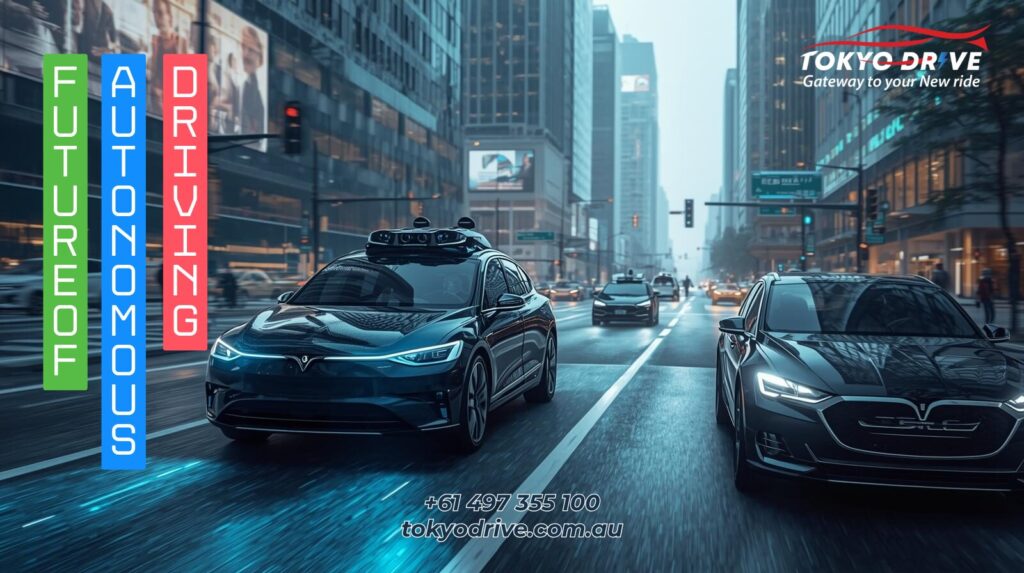If you’ve been following the buzz in the automotive world, you know that autonomous driving has moved from being a futuristic idea to an everyday conversation. In 2025, the question is no longer if self-driving cars will become mainstream, but when. Technology companies, automotive manufacturers, and governments are all pushing forward, yet many drivers are still wondering: how close are we to a future where cars truly drive themselves?
What Is Autonomous Driving?
Autonomous driving refers to vehicles equipped with advanced technology that allows them to operate with little to no human input. Using a combination of cameras, sensors, artificial intelligence, and machine learning, these cars can detect objects, read traffic signs, and navigate roads safely. The Society of Automotive Engineers (SAE) defines autonomy in six levels—from Level 0 (no automation) to Level 5 (full automation where the driver becomes a passenger).
Where Are We in 2025?
As of 2025, most commercially available cars with automation fall between Level 2 and Level 3. Vehicles like Tesla’s Autopilot, GM’s Super Cruise, and Mercedes’ Drive Pilot offer features such as lane-keeping assistance, adaptive cruise control, and limited hands-free driving on specific highways. However, true Level 5 autonomy—where a car drives itself in all conditions without human intervention—remains out of reach.

Why Full Autonomy Is Still a Challenge
Despite rapid progress, several challenges prevent full adoption of self-driving cars:
- Technology Limitations – Current AI systems struggle with unpredictable road conditions such as heavy rain, snow, or unusual obstacles.
- Infrastructure Gaps – Many cities lack the smart infrastructure needed to support advanced navigation and connectivity.
- Legal and Ethical Concerns – Governments are still figuring out liability, insurance, and safety regulations.
- Public Trust – Many drivers remain hesitant to fully rely on a computer behind the wheel.
The Role of Artificial Intelligence
Artificial intelligence is at the core of autonomous driving. Machine learning allows cars to process massive amounts of data in real-time. For instance, a self-driving car needs to detect pedestrians, analyze their behavior, and make split-second decisions to avoid accidents. AI advancements are improving every year, but achieving human-like intuition is still one of the biggest hurdles.
Autonomous Driving in Urban Areas
Cities present unique challenges for automation. Unlike highways, urban roads are crowded with pedestrians, cyclists, unpredictable drivers, and complex traffic signals. In 2025, some autonomous taxi services like Waymo and Cruise are operating in limited city areas, but only under specific conditions. This shows progress but also highlights how far we are from universal adoption.

The Cost Factor
Currently, vehicles with advanced self-driving technology are significantly more expensive. High production costs for sensors, cameras, and AI systems limit their availability to luxury models. However, as technology matures and production scales, experts predict that prices will drop, making autonomy more accessible to everyday drivers.
How Governments Are Preparing
Regulations play a vital role in shaping the future of autonomous driving. Countries like the United States, Japan, and Germany are actively testing autonomous fleets, updating laws, and creating safety standards. Australia and other regions are also beginning to adopt frameworks that could accelerate the introduction of self-driving technology on public roads.
What 2025 Means for Drivers
For the average driver in 2025, fully autonomous cars are still years away. What we have today is advanced driver assistance that makes driving safer and more convenient. Lane departure warnings, adaptive braking, and semi-autonomous highway driving are features now becoming standard. This means drivers benefit from technology without completely giving up control.
Looking Ahead: 2030 and Beyond
Experts predict that by 2030, we may see wider adoption of Level 4 vehicles capable of fully autonomous driving in controlled environments. By then, advancements in AI, connectivity, and infrastructure could finally make driverless cars a common sight. Until then, 2025 serves as a crucial transition point where we balance human driving with automated assistance.

Conclusion
The future of autonomous driving is closer than ever, but we’re not quite at the finish line in 2025. Technology, infrastructure, and regulations need to align before self-driving cars can fully replace traditional vehicles. For now, drivers can enjoy a safer, smarter, and more connected driving experience, while keeping an eye on what promises to be one of the biggest revolutions in automotive history.


